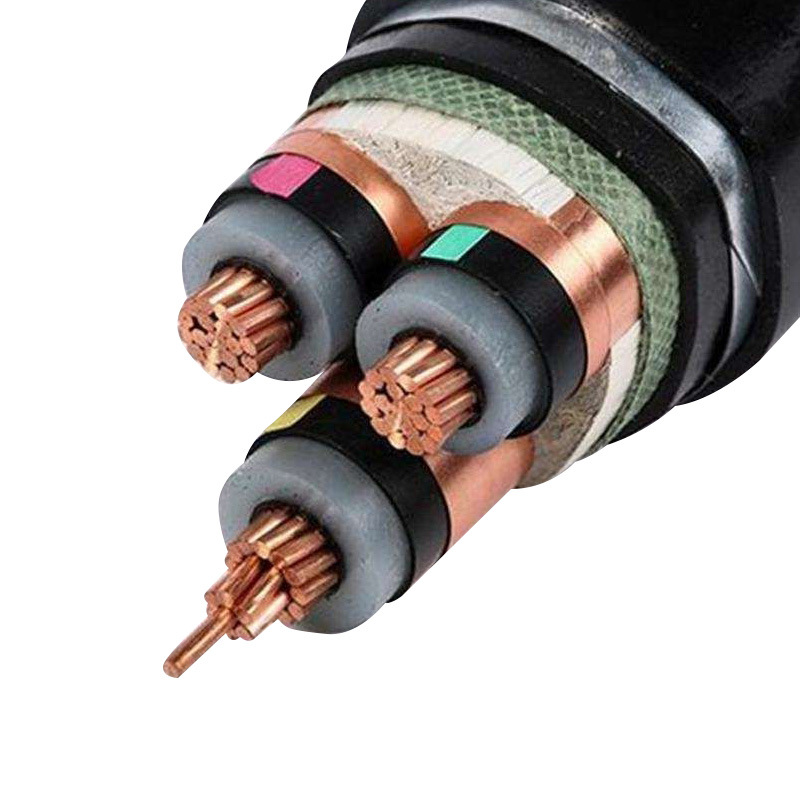Core twisting
Conductor twisting
What is the core twisting of wires and cables? Wire and cable conductor twisting is to twist several single wires of the same or different diameters together in a certain direction and according to certain rules to form a whole twisted core.
When the twisted wire is used directly as a wire, it is called a bare stranded wire, such as steel core aluminum stranded wire, aluminum clad steel core aluminum stranded wire, etc.; when the twisted wire is used as a conductor of insulated wires and cables, it is called a twisted core, which is the main component of insulated wires and cables.
Cabling of insulated cores
Cabling is the process of twisting several insulated cores or unit groups into a cable core according to certain rules. Cabling is also twisting. In addition to twisting, the cabling process also includes cabling filling, taping and other processes.
Characteristics of twisted wire core
Good flexibility
Since wires and cables are used in different occasions, the current carrying capacity is different, and the cross-section of the wires is also large and small. As the cross-section of the wire increases, the diameter of the wire also increases, making it difficult to bend the wire.
If multiple small-diameter single wires are twisted together, the bending ability of the wire can be improved, which is convenient for the processing, manufacturing, installation and laying of wires and cables.
Good stability
The twisted wire core with multiple single wires twisted together in a certain direction and a certain rule, because the position of each single wire in the twisted wire is alternately in the elongation zone at the top of the twisted wire and the compression zone at the bottom of the twisted wire, when the two ends of the twisted wire are bent downward, the elongation and compression forces on each single wire are equal, the single wire will not be elongated and compressed, and the twisted wire will not be deformed.
If multiple single wires are not twisted but combined in parallel into a wire harness, then when the wire harness is bent, the upper single wire will be embedded in the wire harness, and the lower single wire will also be compressed toward the center of the wire harness due to the change in length, thus changing the shape of the wire harness.
Good reliability
Using a single wire as the conductor of wires and cables is susceptible to the unevenness of the material or defects in manufacturing, which may affect the reliability of a single conductive core. Using multiple single wires twisted together, such defects are dispersed and will not be concentrated on a certain point of the wire. The reliability of the wire is much stronger, which is particularly evident at the joints of the wire.
High strength
Compared with multiple twisted wires, the strength of a single wire with the same cross-sectional size is higher than that of a single wire with the same cross-sectional size.
Wire core twisting form
The twisting form is mainly divided into regular twisting and irregular twisting (bundling). Regular twisting can be divided into regular concentric single-wire twisting and regular concentric stranded wire twisting (complex twisting).
Regular concentric single-wire twisting can be divided into ordinary twisted wire (copper, aluminum twisted wire) and combined twisted wire (steel core aluminum twisted wire).
Regular concentric single-wire twisting
Ordinary stranded wire uses single wires of the same diameter, twisted in layers in a concentric circle, with each layer twisted in the opposite direction. Their center layer is usually a single wire or 2 to 5 single wires of the same diameter twisted into a core, and one or more layers of single wires are twisted on top of them.
Combined stranded wire The representative product of combined stranded wire is steel core aluminum stranded wire for overhead transmission lines, which is made of single wires of the same diameter and different materials or different diameters and different materials.
Irregular single-wire twisting (bundle wire)
Bundle wire is a stranded wire made of multiple single wires twisted together in the same twist direction without following the twisting rules. The positions of the single wires are not fixed to each other, and the shape of the bundle wire is difficult to maintain a round shape. Since the stranding of the bundle wire is all in one direction, it is different from the twisting of the ordinary stranded wire, which is one layer to the left and one layer to the right. Therefore, the bundle wire is softer than the ordinary stranded wire.
Fan-shaped compressed wire core and round compressed wire core
The significance and purpose of twisted wire and cable
It is not easy to bend when using a single wire, and the flexibility is poor, which brings difficulties to production, transportation, installation, laying and use.
Due to the large cross-section of a single wire, the eddy current loss is large, which affects the power transmission effect.
Purpose: to ensure a certain cross-section in electrical performance; a certain flexibility in mechanical performance.
Post time: Sep-13-2024







